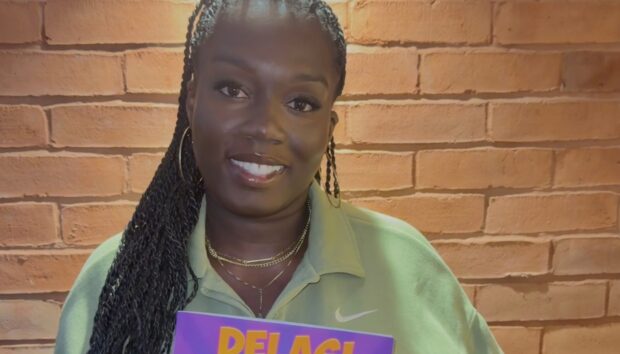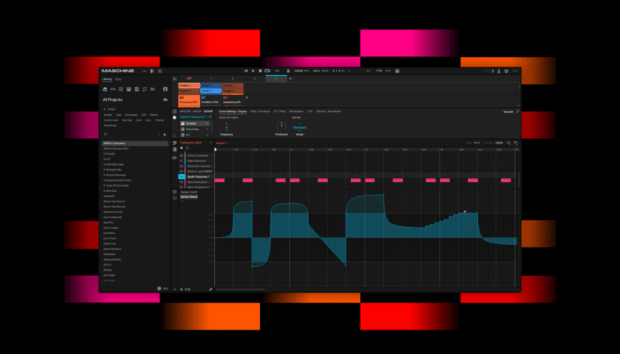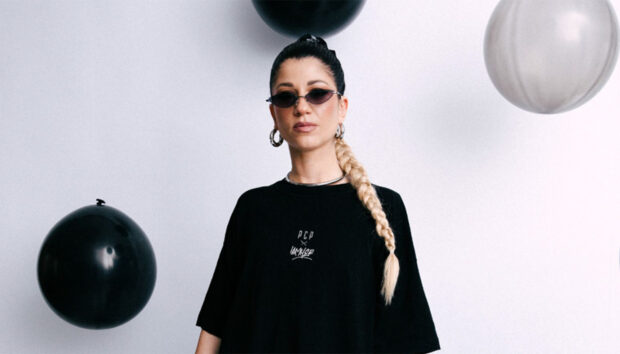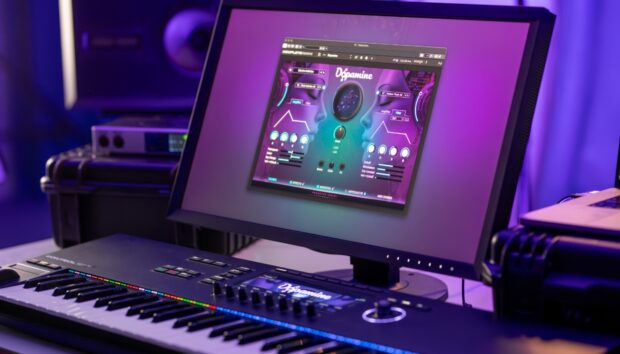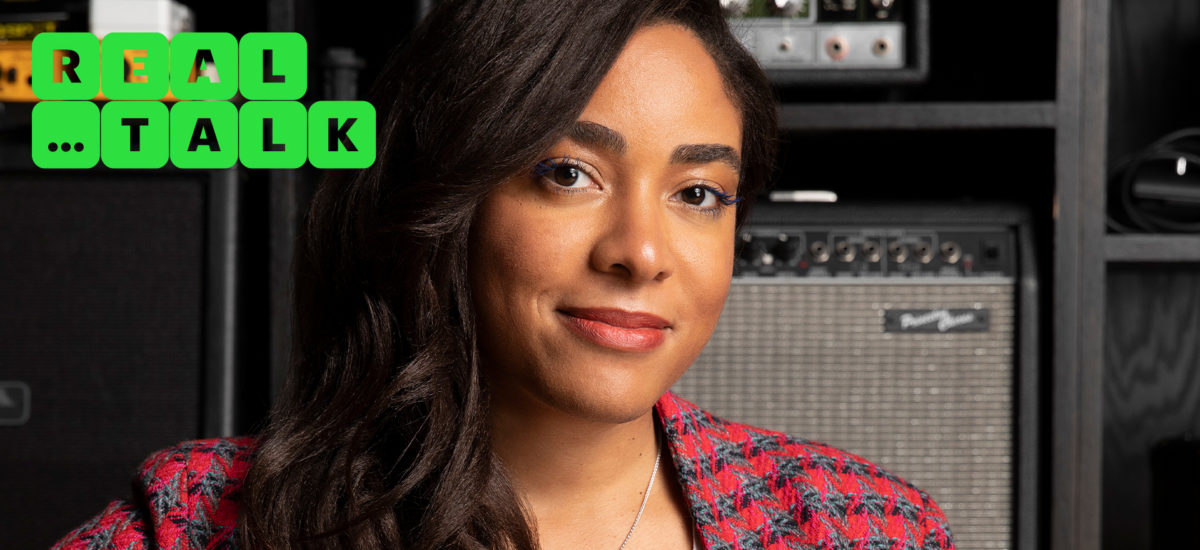
Movie awards season is upon us and we recently had the chance to talk to L.A.-based composer and guitarist Amanda Jones, whose music for Apple TV’s design series Home has netted her a 2020 Emmy nomination, making her the first African-American woman to ever be nominated in the Primetime Emmy score category. As we found out in this episode of Real Talk, her success is the result of working nonstop since she graduated from Vassar College in 2010 with a focus on music composition (she also participated in Berklee College of Music’s film scoring and orchestration program in 2014). Her adventure has included working on literally scores of low-budget indie films and shorts, interning with Hans Zimmer and Henry Jackman and composing music for Lena Waithe’s Twenties, Ava DuVernay’s Cherish the Day, Tim & Eric’s Beef House, a seriously crazy Trolls 2 commercial for McDonalds and the recent Freeform series Love in the Time of Corona, for which she recently scored four episodes in just under a week.
Amanda runs Logic – which allows her to score to picture inside the DAW – as well as Native Instruments’ MASCHINE 2.0, which she often uses to layer punchy kicks and ‘70s style snares over live recorded drums. She also uses the KOMPLETE suite of plug-ins, which offers her a range of choices, from classic-sounding drums of different eras to orchestral strings and ambient soundscapes. As for her composition process, Amanda keeps things fluid, starting the music in whatever way suits the mood. “Before I start a project, I’ll think of ideas and keep voice memos on my phone,” she says. “Sometimes I write things down using pencil and paper. Sometimes I’ll just mic my guitar and have the room sound; sometimes I just go direct into the audio interface with it or use the Guitar Rig plug-in. I think it’s just about creating and knowing your instrument. Just have fun and be unique and then you can kind of go into the nuts and bolts of mixing and how you want to tweak your kick or whatever afterwards.”
In a recent episode of Real Talk, Amanda offered up a bunch of necessary advice for up-and-coming composers. Here are eight key elements for breaking into the business and keeping directors happy once you get there. Tune in to the entire episode for more tips on creating themes, music for trailers and mixing.

Listen before you score
It all starts with a conversation with the director about what they want. If you’re working with a director that does not know how to articulate musical ideas, the best thing they can do is put together a Spotify playlist or a bunch of mp3s to show you what sounds they like and don’t like. That will give you something to hold on to and you can pull from some of those tones and textures. A big part of being a composer is being personable – tapping into the team and really listening to the creators to figure out what they want and what they like quickly. You’re kind of being psychic a little bit. It’s kind of terrifying but you need to figure out what they’re looking for as quickly as possible.
Reach out and grow
You want to find and stack your deck with up-and-coming directors that you can grow with and middle-tier directors, someone that may have had some success. Don’t be bashful to reach out to people if you’re really into their work. I just watched a documentary on Netflix and then totally emailed the director like, “Hey, I love it whatever you’re doing. I’d love to be part of it.” And all these people – Lena Waithe, Miranda July – do events (maybe not so much right now because COVID sucks). They’ll post the events on Twitter or Instagram and you can go and just meet these people and introduce yourself. It’s been a really interesting ride for me of doing a ton of short films and web series and then getting paired up with directors that are moving on to bigger and bigger things. The directors I worked with in 2014 on small things are now showing films at Sundance, doing their first features with a studio or shooting things for Netflix.
Have your reel ready
I make a new composer reel every single year. In the beginning you have stuff you’ve done from a bunch of short films that probably won’t get very much attention – you just get permission from the director to use clips from the film. But you do this for years and years, and keep refining and tweaking your reels and making them better and making them sound more beautiful. Put your reel on Vimeo or YouTube; it’s helpful to have a visual composer reel so people can see how you score to picture. Also have a link to music people can listen to – it can be things that you’ve written, things that have never been used in a film, but you just love how they sound. Make sure you build a website that makes sense and is really clear and easy to navigate (and embed all that stuff on it). And that is your business card! Figure all of this out ahead of time so by the time you have the opportunity and a huge director gives you the shot to do something on a commercial project, you can email them instantly after you meet them being like, “Hey, here’s my website. Here’s my reel.” Get that stuff together beforehand so when that moment comes you can seize it.
Put your P.R.O. to work for you
It’s really important to let ASCAP or whoever your rep at your PRO (performance rights organization) is – BMI, SESAC, etcetera – know that you’re interested in composing and scoring. ASCAP has a film and TV division and they have some opportunities that aren’t listed on the website they can let you know about. ASCAP helped me a ton – I didn’t have any experience in 2014 and I just went to them with my reel being like, “Hey, I’m looking to break into composition if there’s any events happening, please let me know.” And they paired me up with directors for a unique program through Film Independent, which at that time premiered the short film you worked on during L.A. Film Festival and that was huge. I’m not sure what programs are currently active with ASCAP for up-and-coming composers, but there’s always a new opportunity.
Keep it moving
When you’re scoring for film, nothing is going to fit a perfect time signature. It’s an experimental form, so just have fun with it and get weird with it. It’s okay if it meanders. You’re gonna do weird things really fast. It’s not a song in a traditional sense – it’s music in service of the picture. A mistake a lot of young composers make is that they write something that loops in four bars and it doesn’t move at all. A really easy way to keep your music from getting boring is to toss a theme you’ve created on one instrument onto another. You can have a theme on a piano and then toss the notes on the oboe and it sounds really fresh, and then play with that and modulate it. Pop song structure is good to know, but I feel like when it comes to scoring, you want to keep it fresh and become a bit more experimental in the way you think about music. Taking harmony or music theory classes and studying the scores of classical and contemporary composers can also be really great because it shows you song structure: Section A, Section B, Section C, when the reprise happens, etc.
Hit your hit points
You need to pay attention to just what’s happening on the scene and not get too sucked into your head. You want to accent certain moments that happen – if someone smiles or walks out the door, you want to maybe accent that. A lot of composers will set up a time signature in their DAW and mark when certain hit points happen. Hit points are something that inspires the music to move and change a certain way. For example, if it’s an action movie and someone’s looking out a window and all of a sudden someone starts shooting – that’s the hit point. Also playing with an odd meter like 7/8 or 5/4, that’s a really easy way to make something exciting for action cues. What I do is set the metronome so I hear a certain pulse that’s always at the same timbre – almost like ping, ping, ping, instead of a beat. I need something I can hear as it goes, but it’s not an intense beat and I’m not locked into a time signature so I can move the music around. If you end up needing to get it off to the scoring stage, you can get an arranger or orchestrator to look at your session and just they’ll conform it to a time signature that will make sense to the players in the orchestra or session musicians.
Dialogue is king
Basically, dialogue in film or TV is like the singer. Your music might sound really amazing, but dialogue comes first in the mixing, so you just want to make sure that your music does not interfere. And also rhythmically, making sure it’s not too frenetic when someone is talking. Pay attention to the frequency someone is talking in – you need to be able to hear it over the music no matter what. Women tend to speak at a higher frequency and men speak at a lower frequency. So, for instance, if men are talking, you may want to stay away from really bass-heavy sounds in the music. Be aware of the dialogue in your mix – a mix engineer will come in at the end and adjust like the audio but if your music doesn’t leave room for the dialogue they might mess with your mix to get it to fit.
Say yes
Make sure you don’t have any kind of limitations in your head. The secret in the beginning is to just say yes, yes, yes, yes. Even if you don’t know 100% how you’re going to do it, just say yes and you’ll figure it out. People will be like, “Do you have this? Do you have a car?” Just say yes, and even if you don’t 100% have it, you just figure it out. That’s the first step, like “I’ve convinced these folks that I am a viable candidate, even though I’m totally broke, and I can do this.” In the beginning, everyone’s poor and it sucks and you just have to hustle. It is totally an economic rat race – who can afford to do an internship for 10 weeks without getting paid? So you’re really leaning on friends and family in those early days, like “What couch can I stay on? Whose car can I borrow? What side job do I need to do to make this happen?” Just stay focused on your goals and just keep pushing.
Watch the entire Real Talk episode with Amanda Jones here: https://www.instagram.com/tv/CEF-ctbnqvy/
See all the episodes in the Real Talk series here: https://www.instagram.com/nativeinstruments/channel/
Real Talk, hosted by Vivian Host (@stareyezzz) is every Thursday at 1PM Pacific / 4PM Eastern / 9PM GMT on @nativeinstruments Instagram Live.








